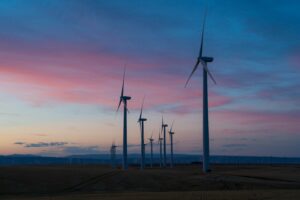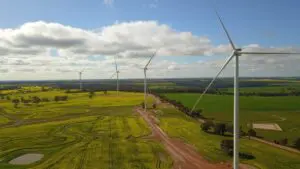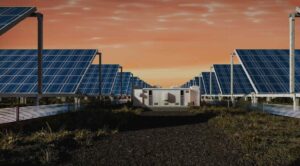Global investment in renewable energy capacity remained steady during the first half of 2020 and despite the massive impact caused by the global COVID-19 pandemic, with the offshore wind sector rising above its peers for its busiest 6-month period ever.
Specifically, according to a database of deals and projects collated by research company BloombergNEF (BNEF), offshore wind saw significant Final Investment Decisions over the first six months of 2020, resulting in the strongest 6-month period for the technology ever.
“We expected to see Covid-19 affecting renewable energy investment in the first half, via delays in the financing process and to some auction programs,” explained Albert Cheung, head of analysis at BNEF, speaking alongside the release of the firm’s 1H’2020 investment figures. “There are signs of that in both solar and onshore wind, but the overall global figure has proved amazingly resilient – thanks to offshore wind.”
According to BNEF, offshore wind financings across the first six months of 2020 totalled $US35 billion ($A50.5 billion) – up 319% year-over-year and well above the full-year figure of $US31.9 billion ($A46 billion) recorded across the whole of 2019.
The offshore wind sector saw Final Investment Decisions made on 28 sea-based wind farms including the largest ever, the 1.5GW Vattenfall Hollandse Zuid array off the coast of the Netherlands which is estimated to cost $US3.9 billion ($A5.6 billion).
Other big-name offshore wind projects finalised during the first half of 2020 included the 1.1GW SSE Seagreen project set to be built off the coast of the United Kingdom and set to be worth an estimated $US3.8 billion; the 600MW CIP Changfang Xidao array off Taiwan, at an estimated $US3.6 billion; and the Fecamp and Saint-Brieuc projects in French waters, together totalling 993MW and $US5.4 billion.
Meanwhile, there were no fewer than 17 separate Chinese installations financed led by the 600MW Guangdong Yudean Yangjiang Yangxi Shapaat worth an estimated $US1.8 billion.
“Offshore wind is benefitting from the 67% reduction in levelized costs achieved since 2012, and to the performance of the latest, giant turbines,” said Tom Harries, head of wind analysis. “But the first half of this year also owed a lot to a rush in China to finance and build, in order to take advantage of a feed-in tariff before it expires at the end of 2021. I expect a slowdown in offshore wind investment globally in the second half, with potentially a new spike early next year.”
The offshore wind sector’s strong showing was not necessarily replicated across the whole renewable energy industry, and overall investment in new renewable energy capacity across the first six months of 2020 increased by only 5%, up to $US132.4 billion ($A191 billion) as against the first six months of 2019, though was unsurprisingly down on the last six months of 2019, following the trend of stronger second-halves.
Investment in new onshore wind capacity fell by 21% to $US37.5 billion ($A54 billion) while investment in new solar fell 12% to $US54.7 billion ($A78.9 billion).
Similarly, investment in new biomass and waste-to-energy plants fell by 34% to $US3.7 billion ($A5.3 billion) while investment in new geothermal plants jumped a whopping 594% to $676 million ($A975 million). Small hydropower plants of 50MW or less saw investment fall by 14% to $US576 million ($A831 million) and investment in biofuel production fell by 82% to $US250 million ($A360 million).
“Renewables have been helped by vastly improved competitiveness and by investor appetite for assets offering secure cash flows,” said Angus McCrone, chief editor at BNEF. “However, project developers face the challenge that key people, whether at the permitting, financing or construction stages, can’t meet face-to-face. And buyers of small-scale solar systems are sensitive to changes in consumer confidence.”










